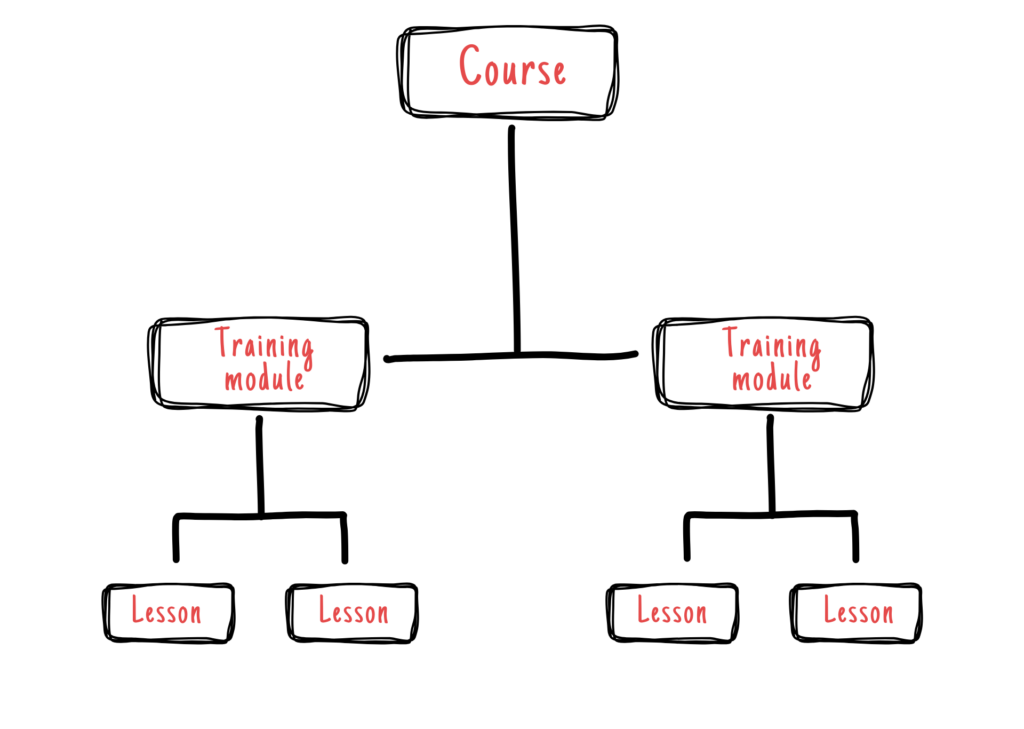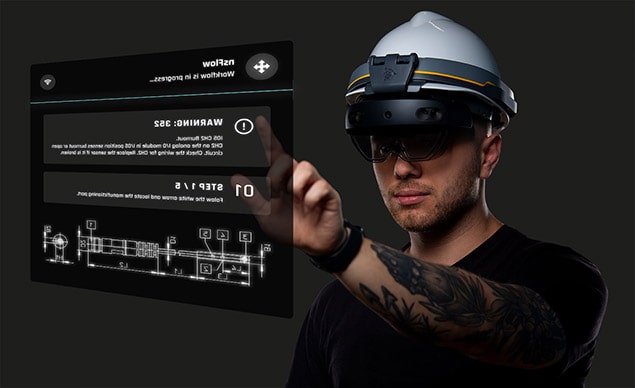Effective training modules are vital for successful training and development. They enhance learning, align with specific skills, ensure consistency, offer flexibility, and boost engagement. These modules address individual needs, adapt to industry changes and aid compliance. They also support career development contributing to overall success.
Therefore, in this article we will focus on what a training module is and what it should look like. Step by step, you will also learn how to create a training module so that it is effective and considers the various possibilities offered by modern, innovative learning.
In This Article:
- What Is a Training Module
- Types Of Training Modules
- How To Create A Training Module
- Training Module Example
- Crafting Effective Training Modules for Employees
What Is a Training Module?
A training module is a separate part of a larger learning course. A module consists of smaller lessons, and a group of modules in turn constitutes a course. It is something like a chapter in a book that focuses on a specific topic or group of issues. Sometimes training modules are referred to as learning units.
Often, after completing the entire training modules, trainees must obtain credit by passing a quiz, test or writing an essay. Passes from many training modules are then the basis for final completion of the entire course.
Training modules use corporate training, educational institutions, professional development programs, and online learning platforms. In the structure of classical learning, a training module is a lower-order unit for the learning path, but a higher-order unit for lessons:

Types Of Training Modules
In traditional learning, the basic type of training module is a textbook and exercises for it. Learners work through the material module by module, performing oral and written exercises assigned to it. Currently, thanks to widespread multimedia, there are many types of training modules. They use a variety of formats such as videos, webinars, interactive quizzes, group study sessions, and more.
Online learning
Classic online learning typically features a structured format accessible through learning management systems, which are helpful especially for large enterprises. It usually includes pre-recorded video lectures, such as a professor explaining a concept, supplemented with written materials like PDFs or slides. Students engage with the content independently, completing assignments and quizzes online. Interaction often happens through discussion forums, where students can discuss course topics or ask questions.

Interactive assessments
Interactive assessments are tools that evaluate a learner’s knowledge and skills. Unlike traditional assessments that rely solely on multiple-choice questions or written responses, interactive assessments incorporate elements. Interactive assessment type of training modules can include multimedia elements like videos or gamified elements like earning points. They also adapt to the learner’s skill level, offering more challenging questions as the learner progresses.
AR In Industrial Training
Augmented reality technology is increasingly used to train technical teams that need to learn on real machines. AR in industrial training involves applying computer-generated elements to physical machines and devices, which significantly improves the process of training the use of this equipment and provides trained employees with a more immersive experience and safer conditions.

Webinars
Webinars as a training module represent a popular method in the learning and development field, especially for remote or geographically dispersed teams. They are real-time, interactive sessions that frequently have a trainer or expert as the facilitator. For instance, a company might host a webinar on new software tools where employees can watch a live demonstration and ask questions directly to the presenter. Webinars can include features like polls or surveys to engage the audience and breakout rooms for smaller group discussions or exercises.
Tutorials
In tutorials, employees gain specific skills or concepts through detailed, step-by-step guidance. For example, employees might use a tutorial to familiarize themselves with new software, following clear instructions and visual aids. These tutorials, available as pre-recorded videos or written documents, enable trainees to control their learning pace and review complex topics as necessary. This approach is especially effective for technical or specialized training, where hands-on, practical learning is crucial.
FAQ sessions
Another type of training module is FAQ sessions, during which trainees can clarify doubts and deepen their understanding of specific topics. They can actively ask questions and receive direct answers from trainers or through a compiled list of frequently asked questions. This interactive format is particularly useful for addressing common concerns or complex points, ensuring that all trainees clearly and consistently understand the material.
Microlearning
In employee training and onboarding, microlearning involves trainees engaging in short, focused learning segments designed to teach a specific skill or concept quickly and efficiently. For example, new employees might access five-minute videos during onboarding, each focusing on different aspects of the company’s culture or basic operational procedures. Microlearning modules often take the form of quick videos, interactive quizzes or short readings.
How To Create A Training Module?
When it comes to the technical aspect of creating training modules, the fastest and best way to do it is to use the features of professional LMSs such as Samelane. With the help of course creators, a training administrator can create courses from scratch, including defining each training module individually.

As for the theoretical and methodological basis for creating training modules, I present several stages of this process below:
Stage 1: Initial Planning
In the initial phase of developing a training module, focus on establishing a strong foundation.
- Defining Module Objectives
Determine the module’s primary aim within the overall course context. This main goal should then be subdivided into specific learning objectives, each corresponding to a different training topic.
- Module Duration
Allocate a realistic and sufficient duration for the module. This involves assigning an appropriate amount of time to each topic to ensure comprehensive coverage within the total time frame of the module.
- Module Format Selection
Decide on the most effective delivery format for the training. Consider a blend of instructional methods, such as interactive lectures, hands-on activities, or digital learning tools, to cater to diverse learning styles.
Stage 2: Detailed Development
The second stage involves fleshing out the details of the module.
- Module Breakdown Development
Create a detailed plan for the module, outlining each topic and estimating the time required for each. This step is crucial for ensuring a well-structured and paced learning experience.
- Supplementary Materials Selection
Identify and prepare additional resources needed to enhance the training process. This could include reading materials, instructional videos, case studies, or interactive tools.
- Technical Implementation and Support
Ensure the module is accessible on various devices to facilitate ease of learning. Prepare to provide essential technical support to resolve any issues during the training.
- Monitoring and Adaptation
Establish a system to measure training effectiveness and gather feedback. Use this information to make necessary adjustments to the module to improve its effectiveness and learner engagement.
Stage 3: Post-Module Activities Planning
Develop follow-up activities to reinforce learning. This could include review sessions, practical assignments, or peer group discussions, ensuring continuous engagement and application of the learned material.
Training Module Example
Here I have prepared an outline of the training module plan, the topic of which is AI compliance for legal advisors:
Crafting Effective Training Modules for Employees
When creating a training module for your employees, aim for a well-rounded blend of engaging and interactive content, which is vital for effective learning. Integrate multimedia elements such as videos, infographics, and interactive activities to appeal to various learning styles and maintain engagement and accessibility. Regularly update these modules to reflect the latest industry standards, company policies, and job requirements to ensure the content remains relevant and up-to-date.
What else? Include a feedback loop in your training for continuous improvement and employee engagement. Use skill assessments and certifications to motivate and validate progress. To meet diverse learning styles, adopt a blended learning approach, mixing digital and traditional methods. Allow personalization in your training modules for tailored learning experiences. Support your employees further with resources like mentors and online forums, helping them deepen their understanding and apply new skills effectively at work. Aim to create a dynamic, inspiring learning environment that adapts to your team’s evolving needs.











